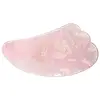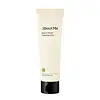What's inside
What's inside
 Key Ingredients
Key Ingredients

No key ingredients
 Benefits
Benefits

No benefits
 Concerns
Concerns

No concerns
 Ingredients Side-by-side
Ingredients Side-by-side

Glycerin
HumectantWater
Skin ConditioningSodium Cocoyl Glycinate
CleansingSodium Lauroyl Glutamate
1,2-Hexanediol
Skin ConditioningHydroxypropyl Starch Phosphate
Triticum Vulgare Germ Extract
Skin ConditioningOcimum Basilicum Leaf Extract
Skin ConditioningDashmoola Extract
Nasturtium Officinale Leaf Extract
MaskingGrass-Hay Herb Extract
PerfumingPyrus Malus Flower Extract
Skin ConditioningCamellia Sinensis Leaf Extract
AntimicrobialGinkgo Biloba Leaf Extract
Skin ConditioningCamellia Euryoides Leaf Extract
EmollientRosa Rugosa Leaf Extract
HumectantBrassica Oleracea Italica Extract
AstringentMedicago Sativa Extract
TonicPhlox Drummondii Seed Extract
Skin ConditioningBetula Platyphylla Japonica Juice
Skin ConditioningThymus Vulgaris Oil
MaskingSodium Hyaluronate
HumectantHydrogenated Lecithin
EmulsifyingLauryl Betaine
CleansingCitric Acid
BufferingAcrylates/C10-30 Alkyl Acrylate Crosspolymer
Emulsion StabilisingSodium Chloride
MaskingBeta-Glucan
Skin ConditioningAllantoin
Skin ConditioningFructooligosaccharides
HumectantHydrolyzed Hyaluronic Acid
HumectantHydroxypropyltrimonium Hyaluronate
Butylene Glycol
HumectantSodium Acetylated Hyaluronate
HumectantHyaluronic Acid
HumectantMaltodextrin
AbsorbentSodium Hyaluronate Crosspolymer
HumectantPotassium Hyaluronate
Skin ConditioningHydroxyacetophenone
AntioxidantEthylhexylglycerin
Skin ConditioningGlycerin, Water, Sodium Cocoyl Glycinate, Sodium Lauroyl Glutamate, 1,2-Hexanediol, Hydroxypropyl Starch Phosphate, Triticum Vulgare Germ Extract, Ocimum Basilicum Leaf Extract, Dashmoola Extract, Nasturtium Officinale Leaf Extract, Grass-Hay Herb Extract, Pyrus Malus Flower Extract, Camellia Sinensis Leaf Extract, Ginkgo Biloba Leaf Extract, Camellia Euryoides Leaf Extract, Rosa Rugosa Leaf Extract, Brassica Oleracea Italica Extract, Medicago Sativa Extract, Phlox Drummondii Seed Extract, Betula Platyphylla Japonica Juice, Thymus Vulgaris Oil, Sodium Hyaluronate, Hydrogenated Lecithin, Lauryl Betaine, Citric Acid, Acrylates/C10-30 Alkyl Acrylate Crosspolymer, Sodium Chloride, Beta-Glucan, Allantoin, Fructooligosaccharides, Hydrolyzed Hyaluronic Acid, Hydroxypropyltrimonium Hyaluronate, Butylene Glycol, Sodium Acetylated Hyaluronate, Hyaluronic Acid, Maltodextrin, Sodium Hyaluronate Crosspolymer, Potassium Hyaluronate, Hydroxyacetophenone, Ethylhexylglycerin